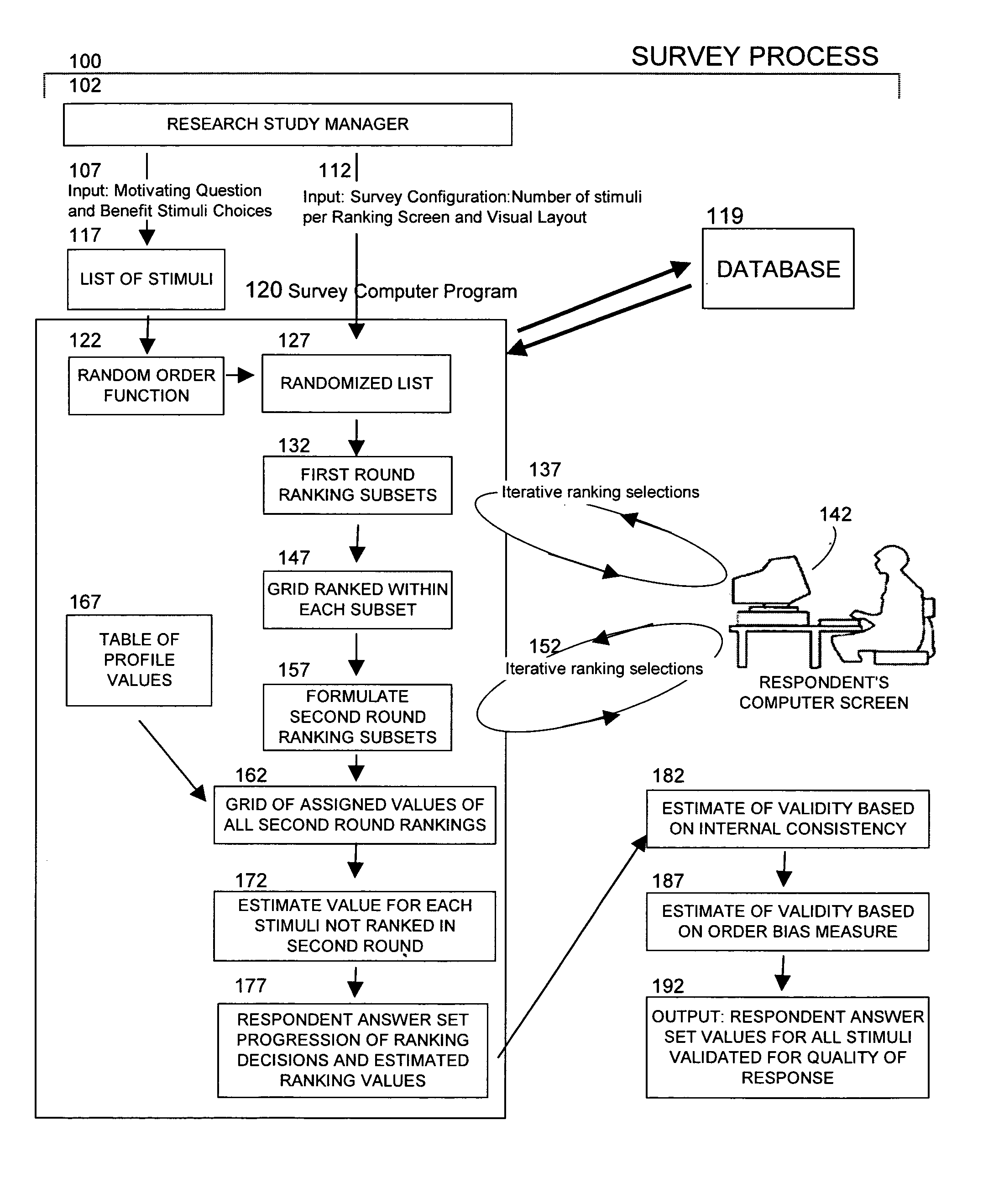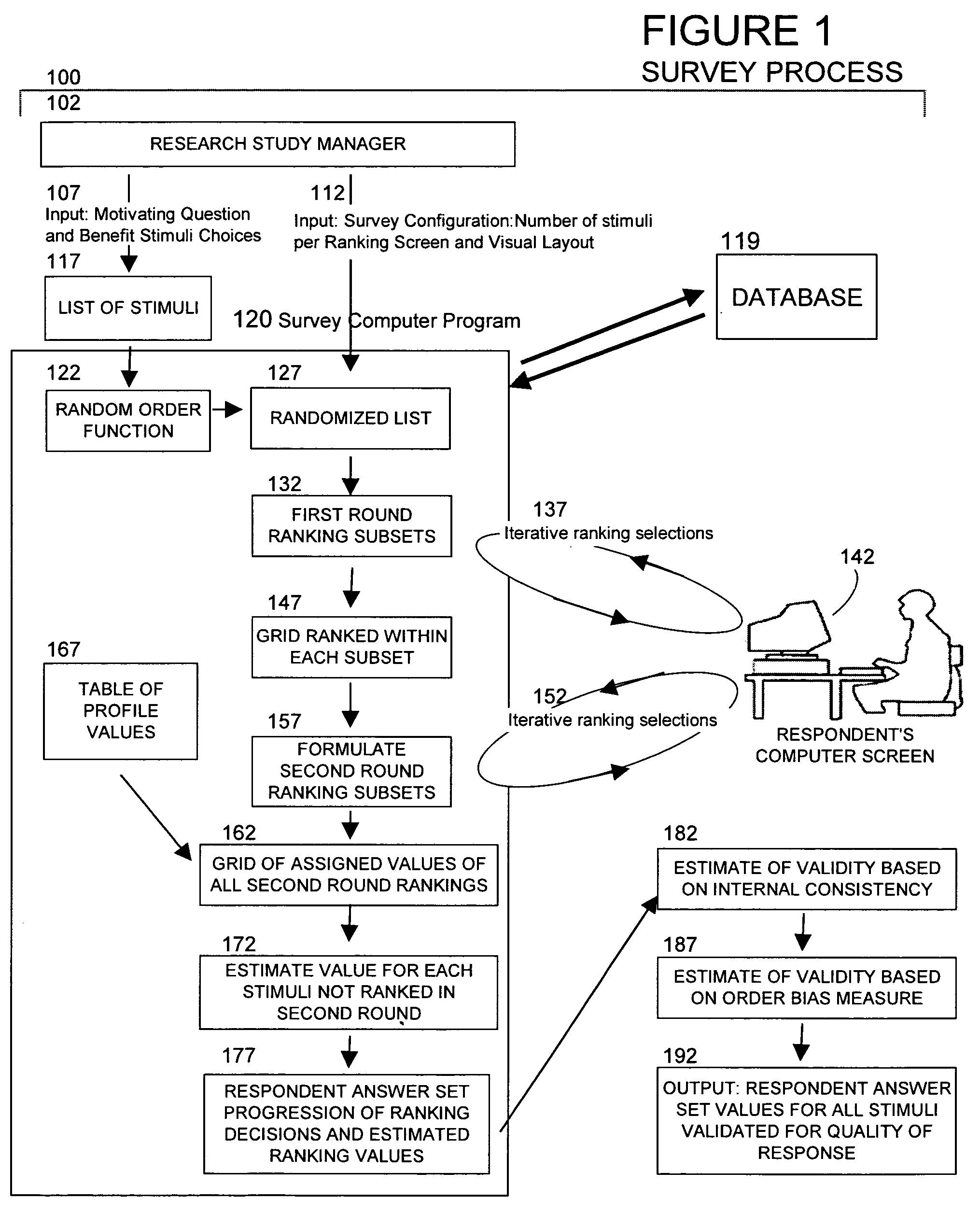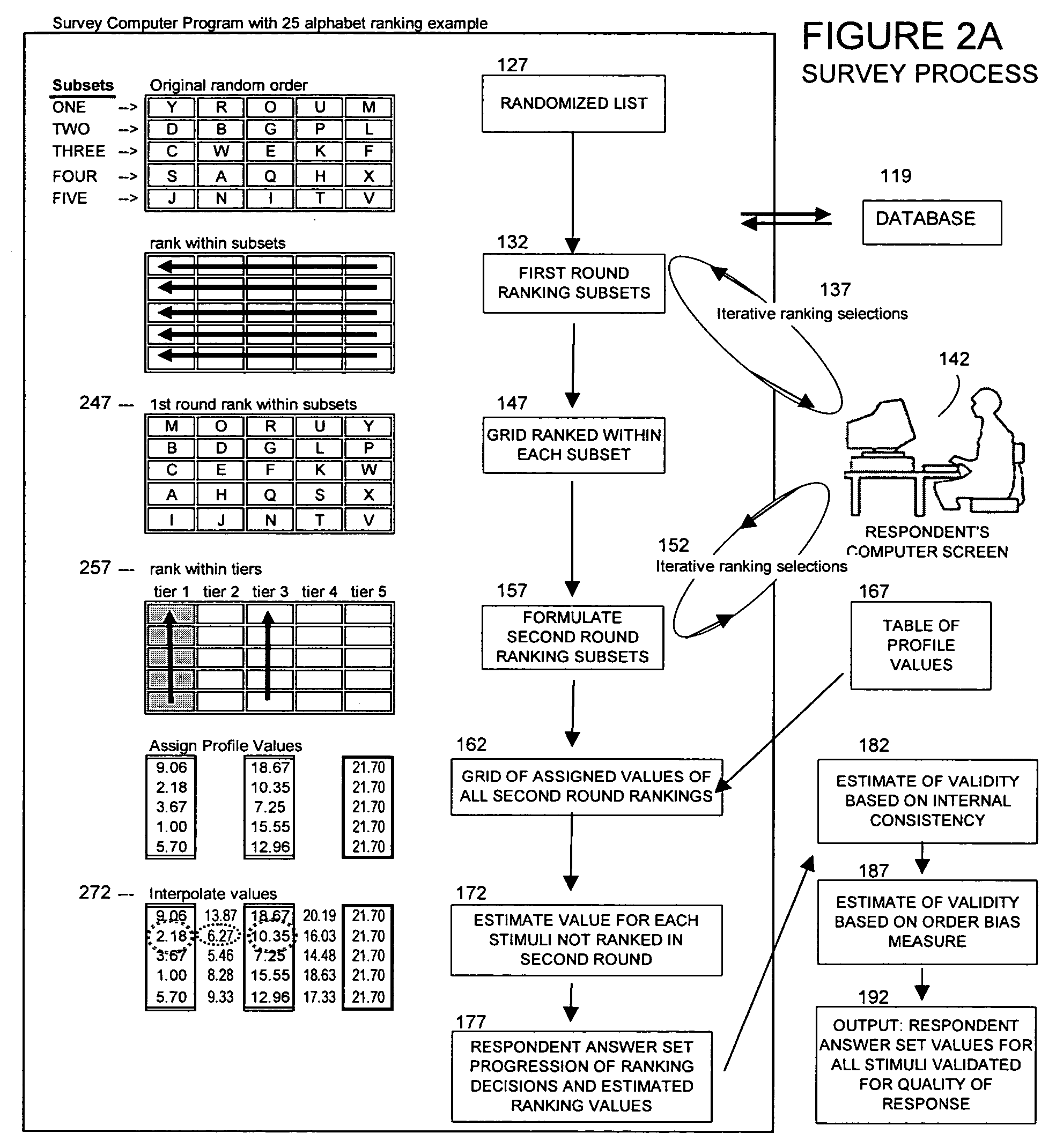Method for estimating respondent rank order of a set stimuli
a technology rank order, which is applied in the field of method for estimating the rank order of respondent rank order of set stimuli, can solve the problems of limited rating options, prior art solutions providing limited options for measuring or validating the quality of individual respondent answer sets, and inability to provide a totally satisfactory answer suitable, etc., to achieve the effect of improving the accuracy of estimating the rank order, improving the capacity limitation, and increasing the accuracy advantage of the present invention
- Summary
- Abstract
- Description
- Claims
- Application Information
AI Technical Summary
Benefits of technology
Problems solved by technology
Method used
Image
Examples
Embodiment Construction
[0050]This invention may be embodied in many different forms and should not be construed as limited to the limited number of disclosed embodiments as these embodiments are provided so that this disclosure will be thorough and complete, and will fully convey the scope of the invention to those skilled in the art. Like numbers refer to like elements throughout.
[0051]The present invention is a computer based survey methodology and platform that efficiently ascertains an approximation of a respondent's rank order preference for a set of choices that cannot be readily displayed on a single display screen. One commercial product that embodies one implementation of aspects of the present invention is Motivation Map software available from Mentor Marketing, LLC of Durham, N.C.
[0052]The number of options a respondent can consider in one rank ordering exercise varies depending upon the respondent's familiarity with the options presented and the length and complexity of the options. For exampl...
PUM
 Login to View More
Login to View More Abstract
Description
Claims
Application Information
 Login to View More
Login to View More - R&D
- Intellectual Property
- Life Sciences
- Materials
- Tech Scout
- Unparalleled Data Quality
- Higher Quality Content
- 60% Fewer Hallucinations
Browse by: Latest US Patents, China's latest patents, Technical Efficacy Thesaurus, Application Domain, Technology Topic, Popular Technical Reports.
© 2025 PatSnap. All rights reserved.Legal|Privacy policy|Modern Slavery Act Transparency Statement|Sitemap|About US| Contact US: help@patsnap.com



